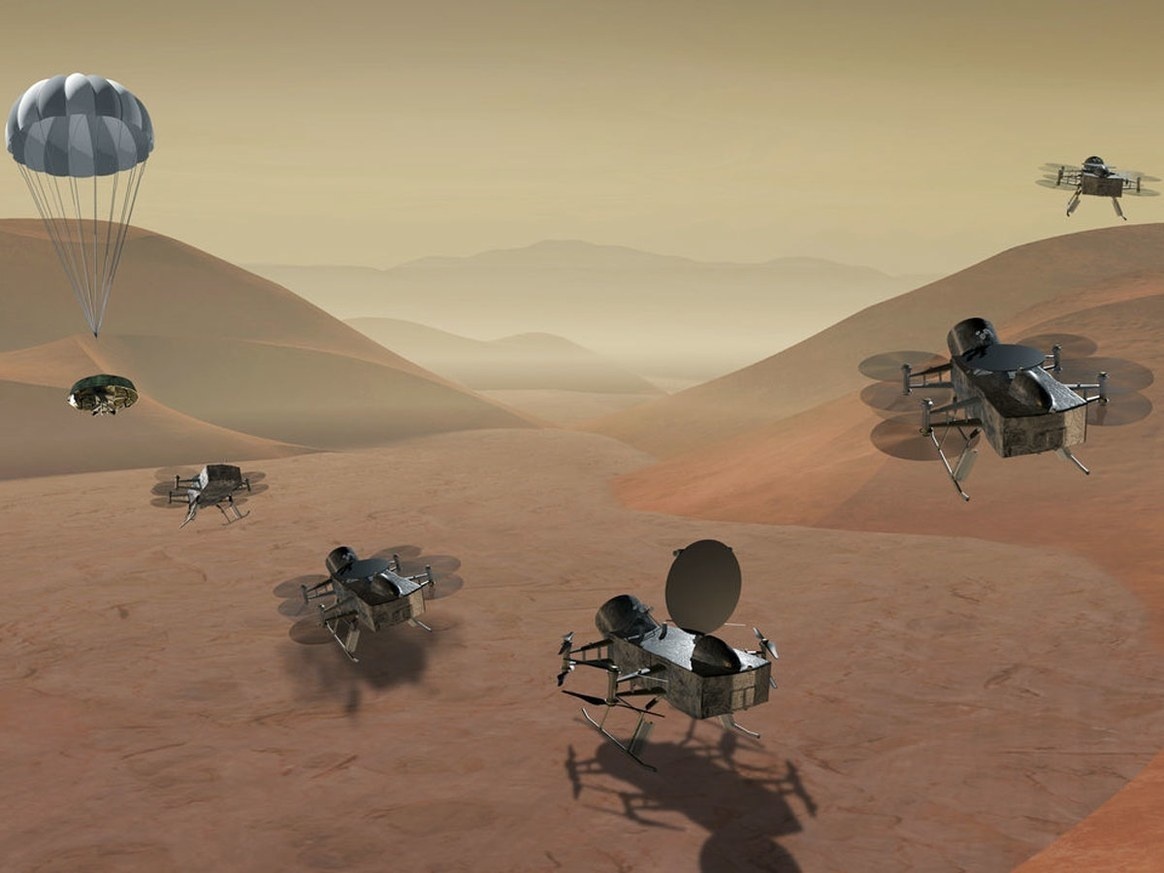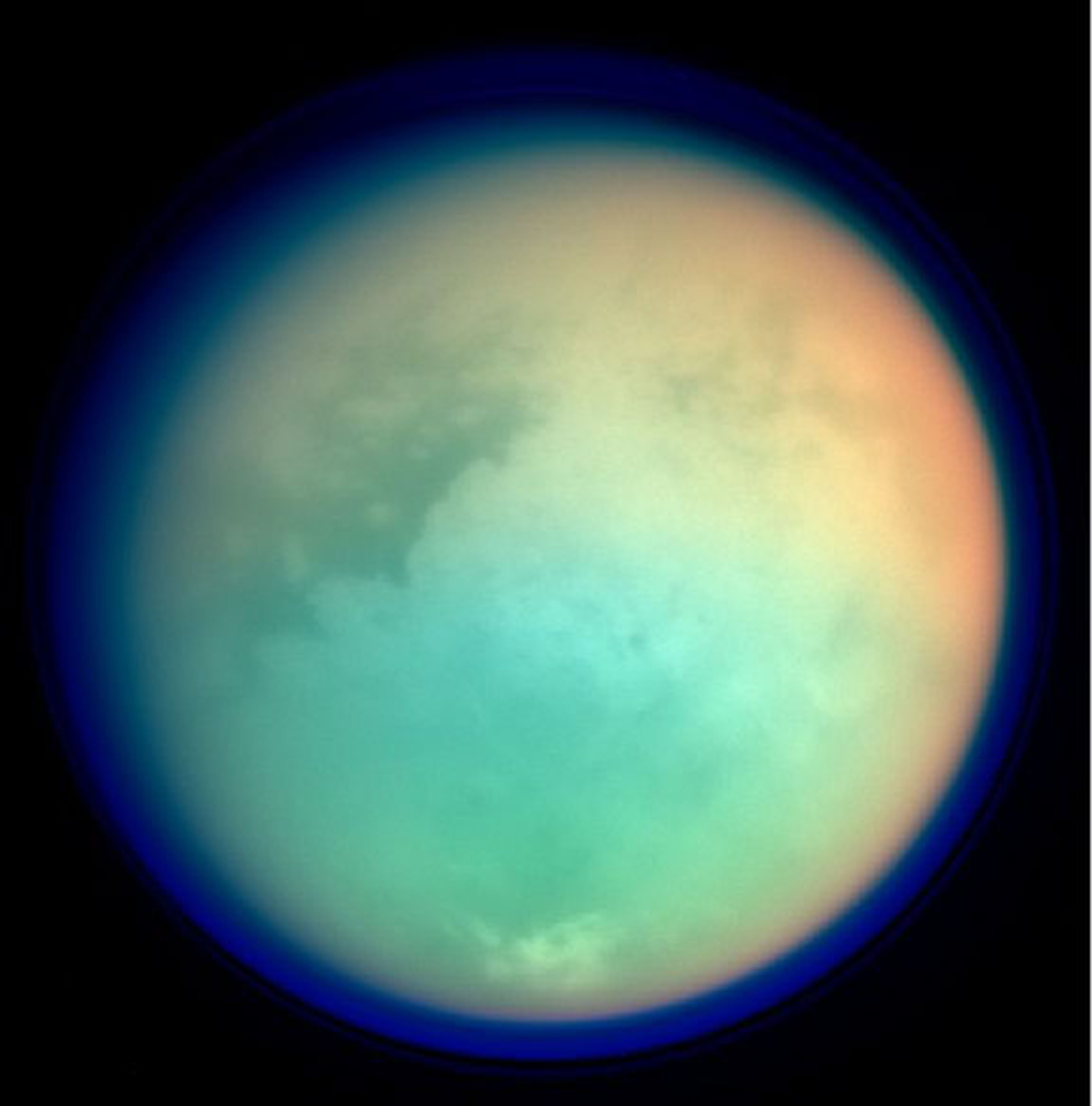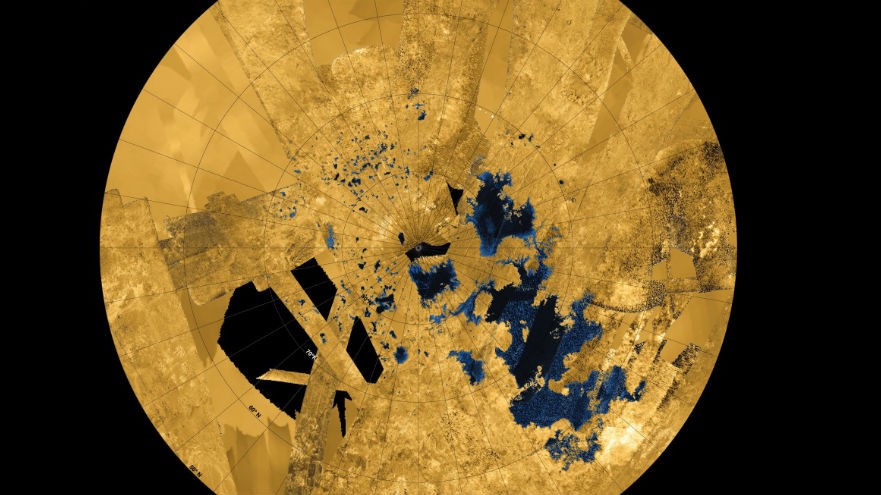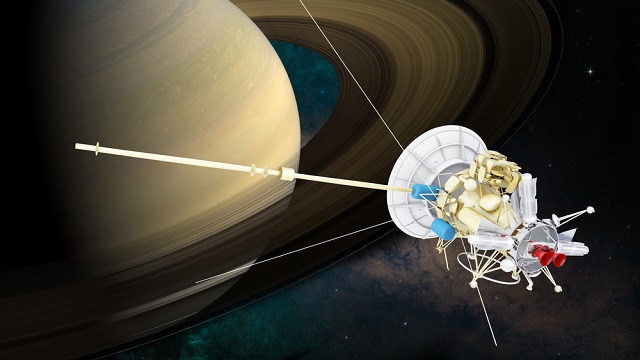Why is Titan’s landscape so Earth-like despite its different composition?
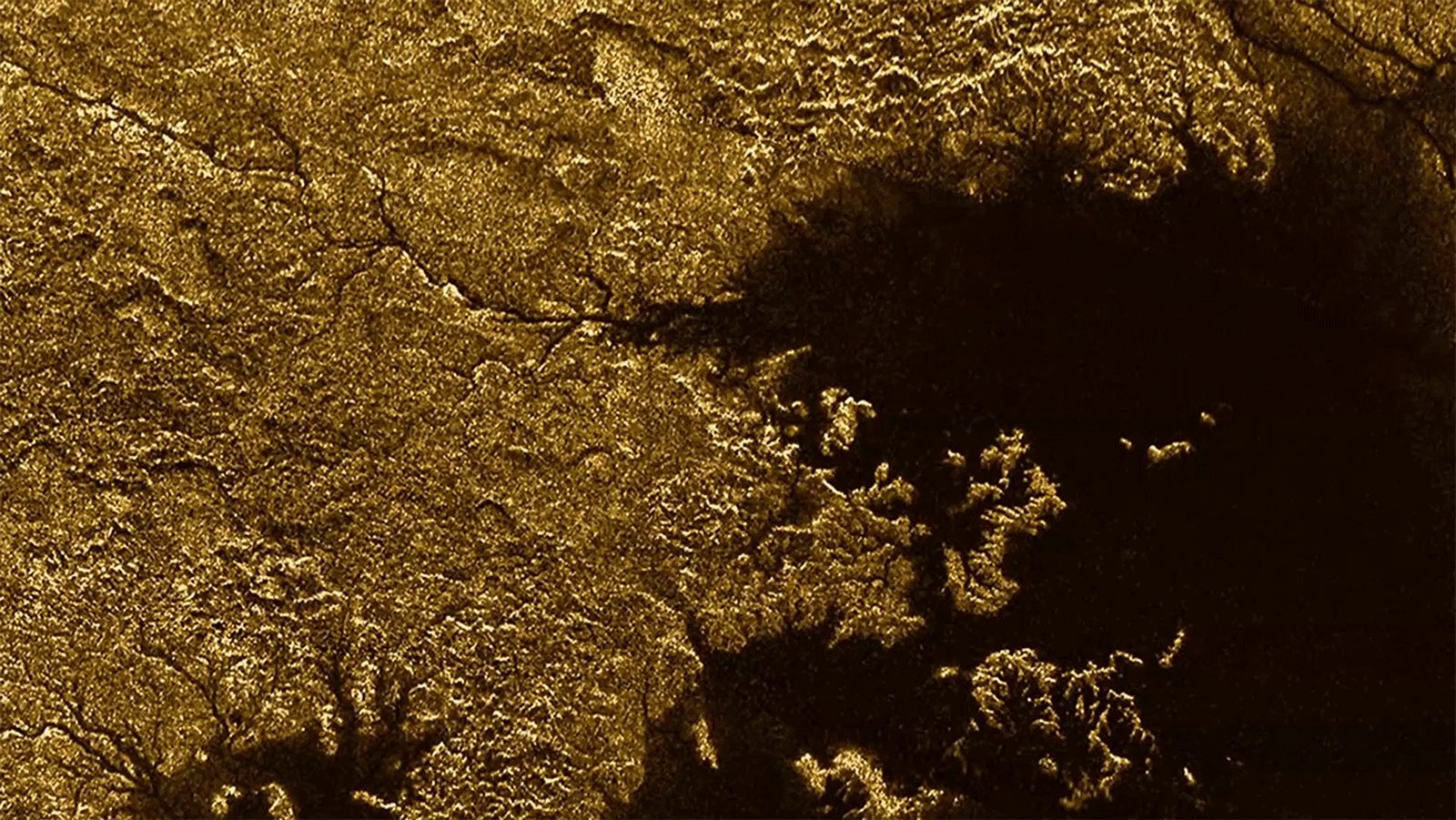
- Titan, one of the moons of Saturn, is the only other body in the solar system where we see liquids on the surface.
- Like Earth, Titan has weather, rain, flooding, sand dunes, and erosion.
- Structures on Earth and Titan may look similar, but the fact that they are made of very different materials puzzles scientists.
Saturn’s largest moon, Titan, has a lot in common with Earth. Titan has rivers and lakes. It has sand dunes and plains. And it even has complex weather patterns that vary season-to-season. But there are some major differences, too. Rather than water, Titan’s rain, lakes, and seas are made of methane. And rather than silica, its sands are made of organic hydrocarbons.
These differences pose riddles for scientists. Sands made from organic hydrocarbons are nowhere near as strong as sands made from silica, which are found on Earth, Mars, or even Venus. And this is a problem. Sands made of hydrocarbons should be eroded down, being quickly transformed into dust.
Yet we see complex structures on Titan formed from these sands: dunes, plains, and labyrinths. Why? How can these structures persist without being weathered away? Understanding this was the goal of scientists from Stanford and the Jet Propulsion Laboratory, who recently published a study in the journal Geophysical Research Letters.
The landscape and climate of Titan
Dense yellow clouds shroud this moon of Saturn. The clouds themselves make Titan special — the fact that it has a sizable atmosphere makes it unique among the moons. Titan is the second-largest moon in the solar system, even larger than Mercury.
Besides Earth, Titan is the only other body in the solar system with liquid on the surface. These are methane lakes, seas, and rivers. On Titan, methane has a complex cycle just like water does on Earth, with rainstorms and occasional floods.
Around the equator of Titan lie massive sand dunes. These dunes can be up to 100 meters high, and from space, they look a lot like dunes found on Earth. As we move to mid-latitudes, the dunes disappear and are replaced with plains. Finally, near the poles, the surface transitions to an alien landscape of deep-cut labyrinths.
Then there is the weather. “Just like Earth, Titan has seasons and climate zones that vary with latitude,” Dr. Mathieu Lapôtre, a professor in geological sciences at Stanford University and lead author of the study, told Big Think.
“For example, Titan’s poles are relatively ‘wet,’ with abundant methane and ethane lakes. In contrast, Titan’s equatorial latitudes are dry for most of the year, with rare methane rainstorms that may occur near [the] equinox.”
During most of Titan’s year (just over 29 Earth years), air rises at the equator and falls at the poles. Near the equinox, however, this reverses as large storms form near the equator or at mid-latitudes. But for most of the year, storms are much more common over the poles. These storms are thought to occur about 100 times in one of Titan’s years.
The mystery of Titan’s sands
The fact that Titan has sands and weather is a mystery for scientists. Although we are still uncertain about the exact composition of the sand on Titan, spectral signatures suggest they may be made of hydrocarbons. Unlike silicate sands, hydrocarbon sands are much weaker. “Under Titan-like conditions, complex hydrocarbons were shown to be much softer and more brittle than silicate sand on Earth,” Lapôtre said.
On Earth, sands are made of silicates. Wind, rain, or transport can break up rocks, weathering them into smaller and smaller pieces until they become sand. Pressure, water, or heat can then cause small particles of sand to reform into rock.
On Titan, however, erosion and weathering break down these particles quickly, and they never reform into rock. They should break up so quickly that they would transform into dust; therefore, the sand dunes we see on Titan should be no more than 3,000 Titan-years old.
But the sand dunes are significantly older — on the order of hundreds of thousands of years. Something had to keep these sand particles around to prevent them from wearing down into dust.
To solve this mystery, Lapôtre and his colleagues turned their attention away from silica sands and instead looked at carbonate grains on Earth — in particular, a special type of sand grain called an ooid. Like a pearl, an ooid can grow by accreting matter layer by layer, getting bigger instead of just eroding smaller.
“Inspired by the mechanics of ooid formation, we proposed a mechanism by which fragile organic sand grains on Titan could compensate for abrasion (and thus remain sand-sized as opposed to turning into dust) — not through chemical precipitation like ooids — but through a process known as sintering,” Lapôtre told Big Think.
On Earth, we often see snowflakes sinter: merge to form larger and larger flakes. These sintering and abrasion cycles can also help explain the strange zoned features of Titan. At the equator, there is little moisture, a lot of wind, and fine grains. In the mid-latitudes, we see the possibility of the most “sintering” in a location where grains are not actively transported often. Then at the poles, in the labyrinths, we see a region shaped by floods and rivers. Moisture helps to stabilize coarser sand grains.
By understanding these small grains of sand, we can understand something much larger: the geologic and weather processes that are at work on this moon. It helps to fill in our understanding of how Titan is very different than Earth, but at the same time, very similar.
